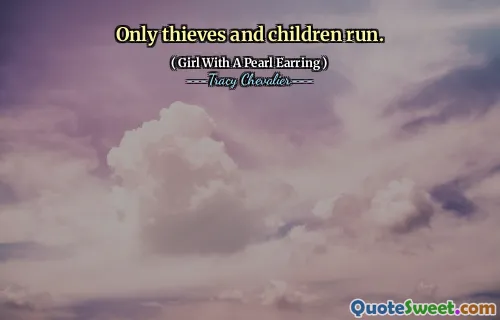
Only thieves and children run.
This quote succinctly juxtaposes the innocence of children with the guilt of thieves, highlighting a shared characteristic: running. On the surface, running might seem like a mere physical action, but within this context, it becomes laden with deeper meaning. For children, running is often an expression of freedom, joy, and the boundless energy of youth. It symbolizes curiosity and exploration, acts of play, or the eagerness to discover the world around them. Children run without fear or shame; their motives are pure, driven by happiness or excitement.
Conversely, for thieves, running is an act of evasion and concealment. It embodies fear, desperation, and a need to escape the consequences of wrongdoing. Their running is a response to guilt and the anticipation of punishment. The sharp contrast between these two groups lies in the reasons behind their similar behavior. This duality invites reflection on how the same action can convey vastly different emotions and intentions based on context.
From the perspective of a story set during the time and themes surrounding "Girl With A Pearl Earring," this quote also resonates with the tension between innocence and moral ambiguity in human nature. The quiet insinuation that only the pure (children) and the corrupt (thieves) engage in running casts an intriguing light on the adult characters, who perhaps move more cautiously, burdened with societal rules and responsibilities. It challenges readers to consider how innocence and culpability are often intertwined, and how behavior can reveal the hidden truths of a person's character, beyond mere appearances.







